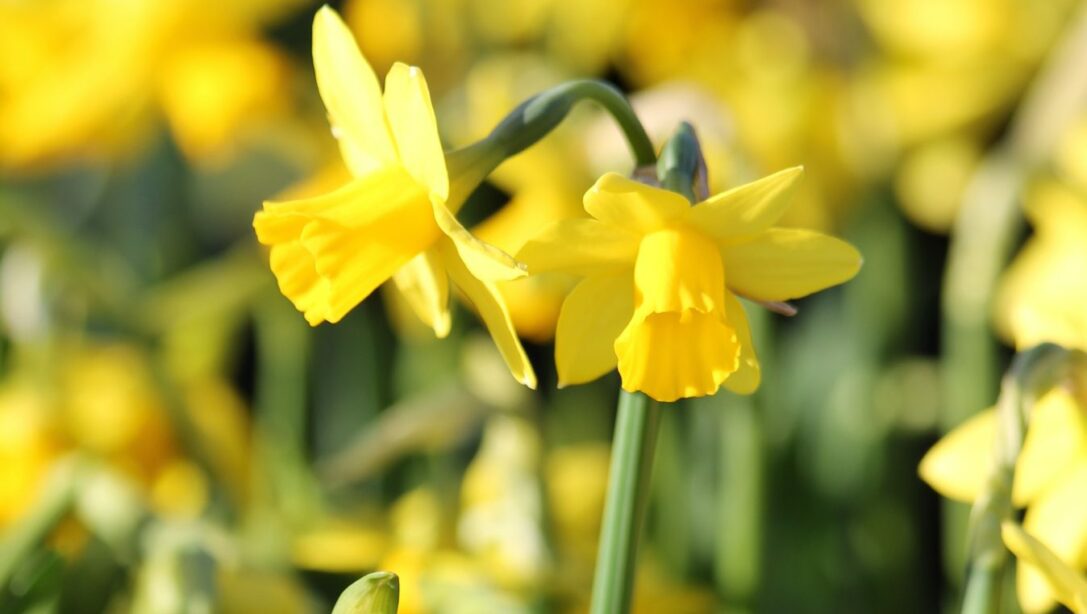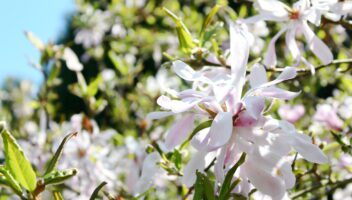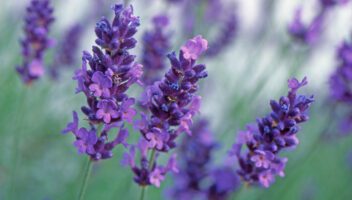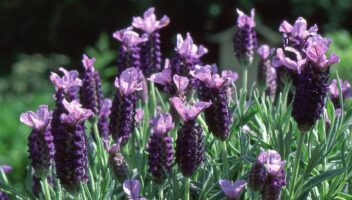February, the last of the winter months often brings with it some very cold temperatures. It may still be too early to be planting most things outdoors, but there is still plenty to enjoy in your February garden, particularly in the vegetable patch, plus plants to prune and protect.
Read our guide to February gardening jobs to find out what to do now, what to plant this month and helpful gardening tips from our Hillier experts to keep your garden at its best.
What to Enjoy in your Garden in February
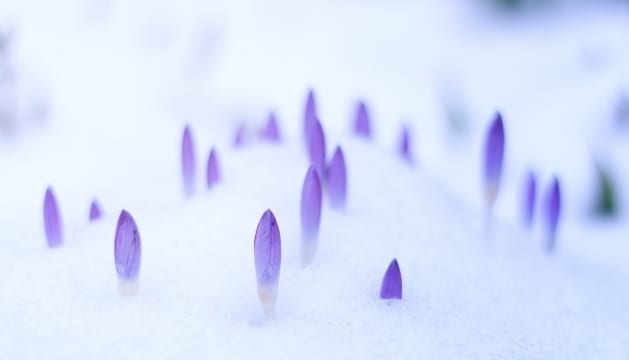
Gardening is as much about appreciating the beautiful now as planning and planting for the future. Enjoy these plants in your February garden and home:
Plants flowering in February
- Cyclamen – both the showy, bedding varieties and the hardy perennial types, such as Cyclamen ‘Coum’ and Cyclamen ‘hederifolium’
- Winter-flowering shrubs: Sarcococca confusa (Christmas Box), hamamelis (Witch Hazel), Skimmia japonica varieties, Viburnum tinus varieties, Daphne ‘Jacqueline Postill’, euphorbia, camellia varieties, Jasminum nudiflorum (Winter jasmine)
- Prunus varieties (e.g Prunus x subhirtella ‘Autumnalis Rosea’, Prunus ‘Kojo-no-mai’)
- Early perennials: Snowdrops (which may have arrived as early as late December), narcissus (daffodils), crocus and Iris reticulata
- Helleborus x hybridus. These come in a huge range of colours as well as single or double flowers
Hillier tip: If you leave Hellebore flower heads on, they will self-seed around the garden. For best effects, plant in groups.
Fantastic Foliage and Architectural Stems
- Ornamental grasses
- Key shrubs and trees: Cornus (e.g. Cornus alba ‘Sibirica’ and Cornus sanguinea ‘Midwinter Fire’), Acer palmatum varieties, Corylus avellana ‘Contorta’ (fantastic twisted stems that look amazing when frosted), Rubus cockburnianus, Betula utilis var Jaquemontii (beautiful white stems), Prunus serrula (mahogany-like bark)
- Conifers, such as juniper, spruce and fir varieties
Hillier tip: Betula utilis var Jaquemontii is lovely planted as a group or as a single specimen.
Fruit and Berries
- Ilex (Holly), gaultheria, cotoneaster, some skimmia varieties
Houseplants
- Compensate for the chilly weather with a living indoor environment. Large foliage houseplants, like Scindapsus, Ficus, Yucca and Dracaena, make a big impact
What to Plant in February
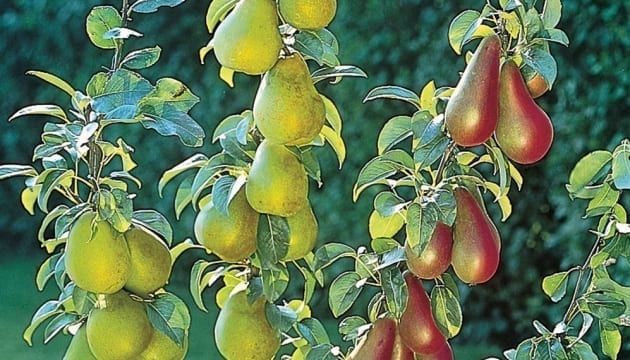
February is a quieter month for planting outdoors, but there are still a number of spring-flowering shrubs in particular that can be planted if weather allows.
What to Plant for Instant Impact
Gardening is often about the patient process of growing from seed, bulb or small plant and nurturing it over time. If you want to balance this out with immediate colour, foliage and scale in your garden, you can always find larger plants or those in bloom right now for instant impact. Be sure to water newly planted gardens often.
Simply browse the ‘what to enjoy now’ list above. Many of these plants will be available from the Garden Centre for immediate enjoyment and, once planted, should continue to develop year after year.
What to Plant for Future Interest
- This is the ideal month to plant primroses
- Rhododendrons and azaleas. Though it is too early for them to flower, they are evergreen and architectural now
- There is still time to plant fruit trees, such as pear and apple, so long as the ground is not frozen
- Spring-flowering shrubs, such as forsythia, dwarf syringa, Spiraea arguta and Ribes sanguineum
Hillier tip: Because the specified spring-flowering shrubs do not have leaves, they are hardy against the weather.
- Small herbaceous plants are now in garden centres. These can be grown on in greenhouses if the weather is bad or planted straight into the garden if it is mild.
What to Grow in February
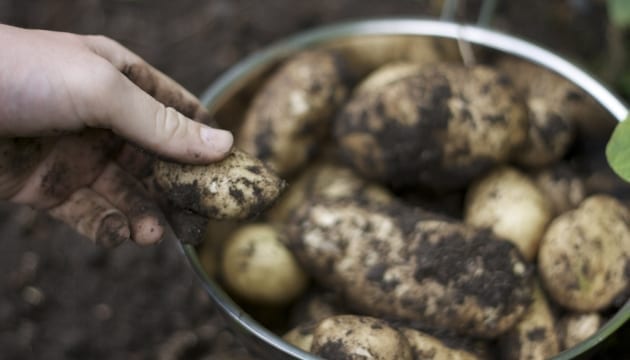
February is the perfect month to head back to your vegetable patch or allotment and get it ready for another year of sowing, growing and enjoying your produce.
Hillier tip: This is the month to prepare your beds for sowing. Clear weeds and stones, dig over and incorporate plenty of compost or well-rotted manure. Clean cloches and set in place so they can warm the soil.
Sow Indoors
- February and March are the months to start ‘chitting’ your potatoes, i.e. letting them sprout so they grow faster and stronger. Read our guide to growing your own potatoes to find out how.
- Aubergines and Asparagus peas can be sown in the greenhouse ready for a summer harvest
- Sow cucumber, tomato and sweet pepper seeds if greenhouse conditions are warm enough, or use a windowsill propagator to get your seedlings going
- Some plants, like pea shoots can be sown indoors all year round
Sow Outdoors
- Sow beetroot, chicory, radishes, spinach and lettuce and early turnip varieties outdoors but under cover (e.g. under a cloche)
- Some onion sets can be planted as early as February. Read our guide to growing and harvesting onions to find out more.
- This is the last month to plant garlic in the ground
- If the soil isn’t frozen, hardy broad beans can be sown directly into the seedbed
- Raspberry and blackberry canes plus rhubarb crowns can also be planted out if the soil isn’t frozen or waterlogged
Harvest Now
- Leeks, Parsnips, Kale, Carrots, Swede, Cabbage
Hillier tip: See the planting and harvesting times for many of our most loved vegetable and salad plants in our Seed Sowing Calendar.
View our collection of vegetable and herb seedsGardening Jobs for February
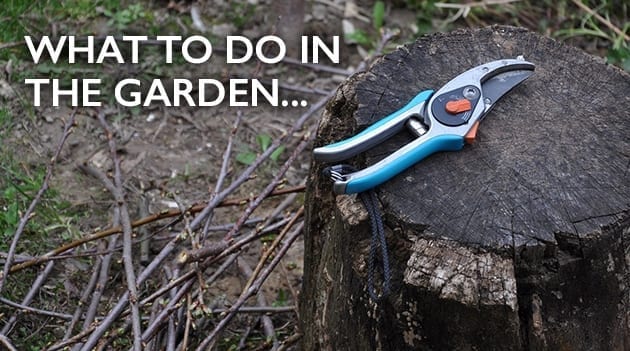
Cold weather may limit time in the February garden, but there are still a few enjoyable jobs you can do if the opportunity presents itself.
Prune in January
- Deadhead winter bedding, such as pansies, cyclamen and violas to encourage prolonged flowering
- Prune Wisteria, cutting back any side shoots that have emerged over summer
- In late February, prune summer-flowering Clematis varieties
- Prune winter-flowering shrubs that have finished flowering – like winter-flowering Jasmine
- Prune evergreen hedges and tidy any overgrown deciduous hedges
- Prune acers if the timing is right. If you look at the plant and see the leaf buds starting to swell, then you can prune back to a strong bud to promote growth. This is most often in late February to early March.
- Cut back ornamental grass heads
Move in January
- Lift and divide snowdrops that have finished flowering
Protect in January
- A number of plants, including Tree ferns, Cordyline and Olives really need extra protection in very cold weather. It is worth having horticultural fleece on standby in February. Fasten it on with clothes pegs for temporary insulation when it turns very cold. Specially designed fleece bags with drawstrings are available in different sizes and are a great option for single specimens, especially in pots
Hillier tip: If horticultural fleece is left on for the whole of the winter, it will likely come undone in gales. It may be detrimental to the plant’s health if it soaks up rainwater, as the moist micro-climate created can encourage fungal growth
Lawncare & Gardencare
- There is very little you can do for your lawn this month – other than avoiding trampling it too much if it’s covered with frost and snow!
Hillier Tip: If you want to get ready for spring, clean pots and greenhouses this month.
Weather Readiness
- To prevent garden taps freezing over, we recommend insulated tap protectors.
- Bubble wrap is also useful for outdoor pipes and insulating your greenhouse
- Keep your paths and driveway safe by having some de-icing salt stored away, ready to sprinkle over any persistent icy patches.
Looking After Birds and Wildlife in February
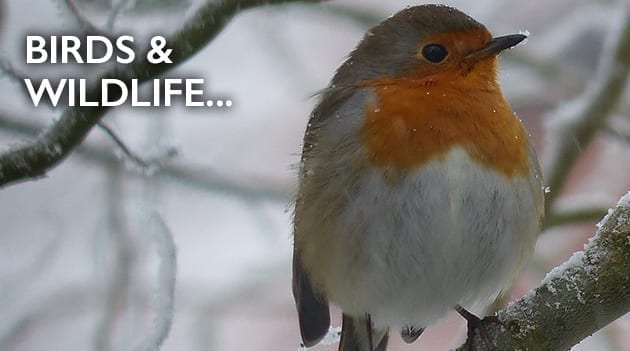
In the winter months, it is important to offer extra care for birds with more food and a fresh supply of water:
- Frequently top up bird food and choose feed with high fat content, like suet fat snax for your February garden. Specially formulated, high energy seed mixes are available as well as specific Robin feed for our winter friends
- Put fresh water out daily, as it freezes over easily in winter
- Put up a nest box if you haven’t done already. With nesting time around the corner, this increases the chance of them being used sooner
Monthly Gardening Tool Checklist
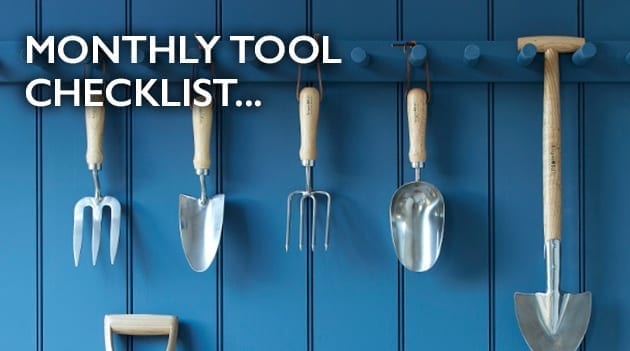
These are some of the essential garden tools and products we recommend to have ready in your shed.
Growing potatoes:
- Seed trays for chitting, compost, potato planter or large pots (if not planting in the ground)
Winter pruning:
Frost protection:
- Pot feet, bark chips, coldframe, mulch, greenhouse bubble insulation, horticultural fleece, sulphate of potash
Get ready for spring!
Now is the ideal time to make sure your tools are cleaned, sharpened and oiled ready for the spring. Putting a new edge on secateurs, shears and even spades will give you a head start come March. This is also a good month to treat any wooden garden furniture if needed – and if there is some dry weather.
View our collection of high-quality gardening toolsReady for March? Discover your March garden.
Was This Article Helpful?
Join the Hillier Gardening Club to get the latest gardening news and advice
Find Out More

